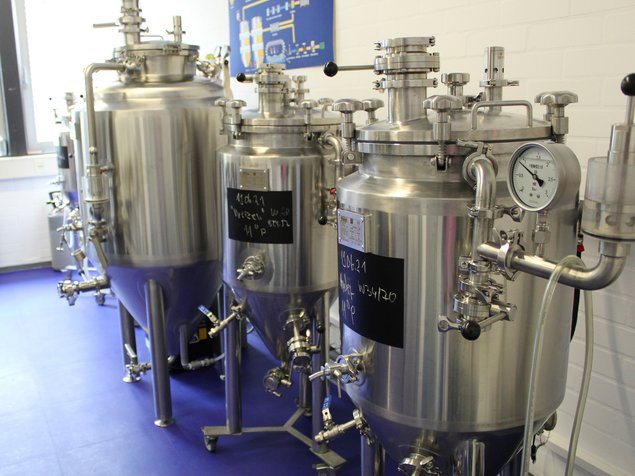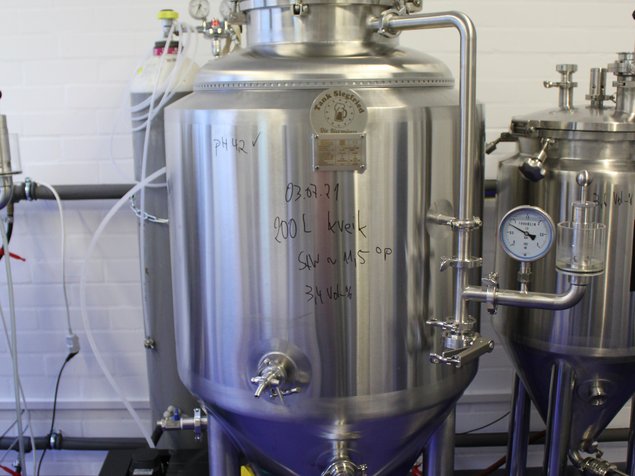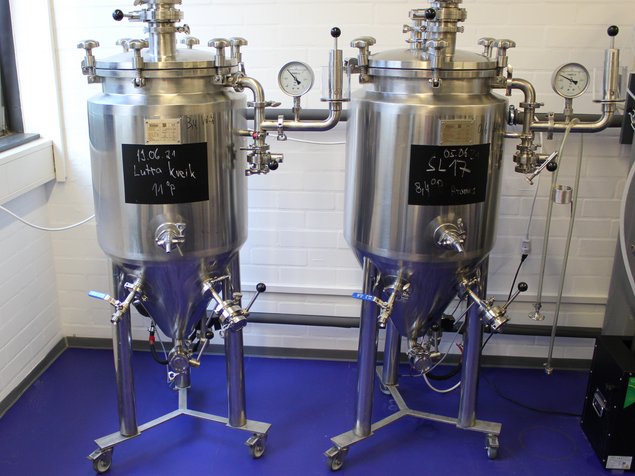They say, "The brewer makes the wort, the yeast makes the beer!". In fact, a wort that has been boiled and cooled to a temperature that the yeast can tolerate does not taste like beer. There are numerous reasons for this, and brewers talk about the so-called "wort taste", which is due to a large number of carbonyls that are first utilized and broken down by the yeast. In addition, there are hop oils in the wort, which would lead to an unpleasant bitterness and even make it undrinkable.
Around 100 different yeasts are used in commercial brewing, whereby a distinction is made between top-fermenting and bottom-fermenting yeasts. In simple terms, the top-fermenting ones ferment at "upper temperature", the bottom-fermenting ones at "lower temperature"; a rule of thumb is 20 °C for the top-fermenting ones and 10 °C for the bottom-fermenting ones. Only the Norwegian Kveik (yeasts) work at temperatures of up to 40 °C without producing off-flavors or the dreaded fusel oils.
During fermentation, the fermentable sugars are converted into alcohol and carbon dioxide, and numerous fermentation by-products are also produced, which have not yet been fully analyzed. The so-called "pH drop", which results from the formation of carbonic acid as well as other fruit acids such as malic acid, makes the beer long-lasting, and unpleasantly bitter hop resins and oils are also precipitated.
Many breweries use a pressureless fermentation vat for fermentation, the temperature of which is controlled. Shortly before the end of fermentation, the still cloudy green beer is pumped into a pressure tank, in which it is enriched with the desired carbon dioxide content under pressure control. At the same time, sediment from the malt and hops as well as the yeast cells settle until the beer is ready for bottling. Large breweries then filter the beer, which makes it more durable.
Initially, we worked with pressureless thermostated fermenters with a capacity of 10 - 200 liters. The challenge here is to always hit the right time to "hose" so that sufficient carbon dioxide builds up in the pressure vessel from the still unfermented sugars and the beer clarifies naturally at the same time. If you miss the right moment, you either have to add more sugar or adjust the pressure from the outside by adding carbon dioxide.
Today, we use thermostated cylindrically-conical pressure fermenters (ZKG) in which the entire fermentation process takes place right through to bottling. We have 4 ZKGs with a maximum capacity of 70 liters and one with a maximum of 250 liters.
It is a tradition in the brewing industry to give names to fermentation and/or storage tanks. This is a way of paying tribute to people without whom a brewery might never have become what it is. Until now, only our largest ZKG with a net volume of 200 liters had a name, namely "Tank Siegfried". After much deliberation, we have now also given our four ZKGs, each with a net volume of 50 liters, names: "Tank Alex", "Tank Martin", "Tank Mathias" and "Tank Ulla". Similarities with living persons are expressly desired and by no means coincidental.
We are often asked how long it actually takes to finish a beer? There is no general answer to this question. A Kveik beer, fermented with Voss-Kveik, is ready to drink 10 days after brewing if only bitter hops are used. A wheat beer only needs a little longer and is ready to drink after 14 days. However, a bottom-fermented pilsner can also be stored in the ZKG for 8 - 10 weeks until it has matured and naturally clarified.



